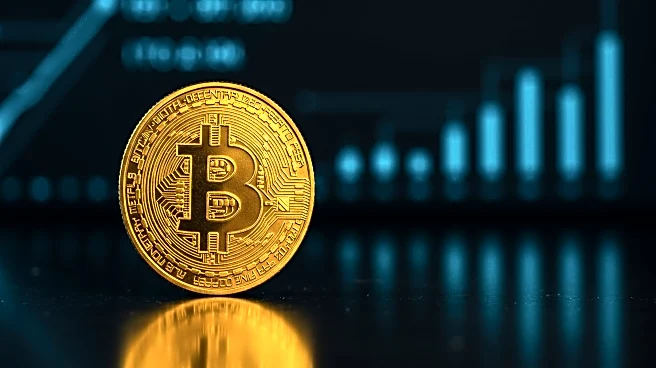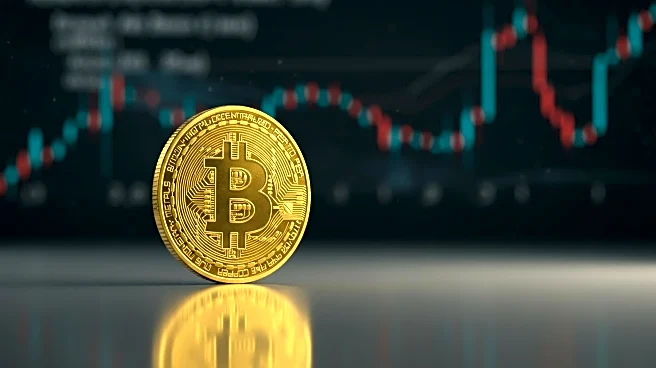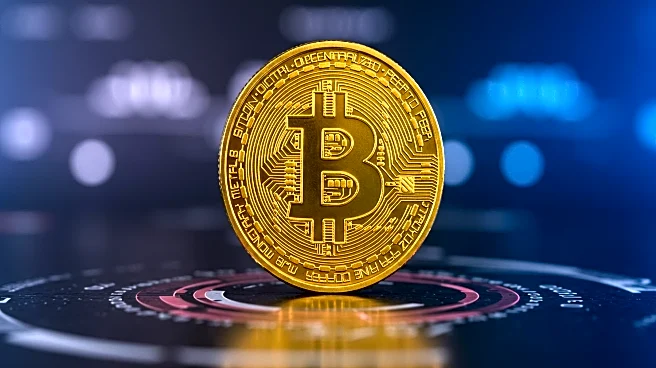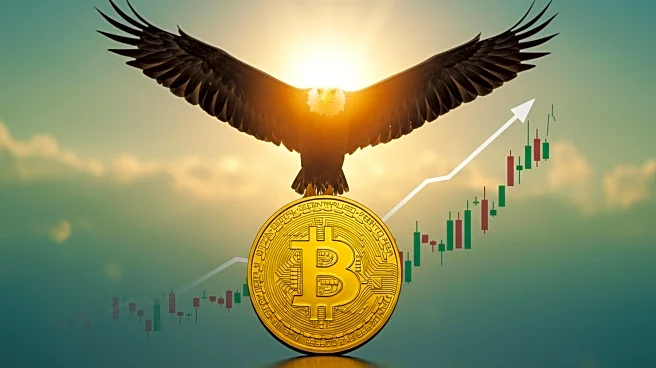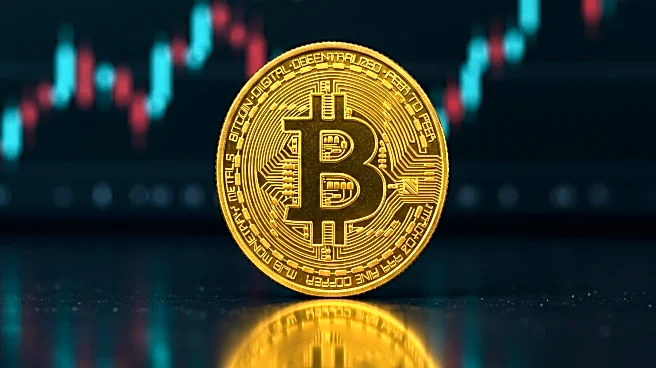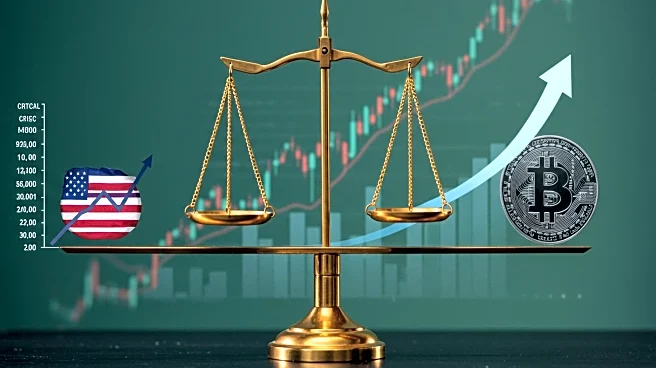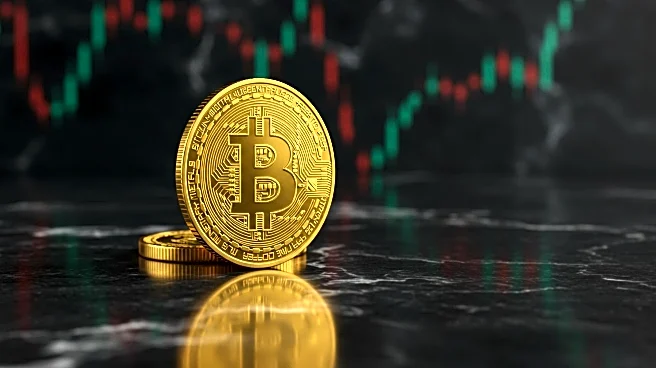What's Happening?
Bitcoin's market capitalization has reached approximately 1.7% of the global money supply, marking a significant milestone for the cryptocurrency. This growth is attributed to the erosion of fiat currencies' purchasing power due to central banks' monetary expansion. Federal Reserve Chair Jerome Powell's speech at the Jackson Hole Economic Symposium signaled a potential rate cut, leading to a surge in Bitcoin's price by over 2% to approximately $116,000 per BTC. The correlation between global liquidity and Bitcoin's price is evident, with periods of monetary expansion often coinciding with increased demand for digital assets.
Why It's Important?
The rise of Bitcoin as a hard money alternative reflects a broader shift in investor preferences amid concerns over inflation and economic instability. Powell's signals of a potential rate cut have reinforced Bitcoin's position as a macroeconomic hedge. Analysts suggest that structural risks within the traditional financial system are prompting a reevaluation of investment strategies, with hard assets like Bitcoin gaining prominence. This trend is expected to continue, with projections of Bitcoin potentially reaching $250,000 by 2030.
What's Next?
The September FOMC meeting will be crucial in determining the Fed's monetary policy direction. If a rate cut is implemented, it could further bolster Bitcoin's appeal as a store of value. The demand for alternative stores of value is likely to remain a focal point for investors and policymakers as central banks navigate inflation challenges.
Beyond the Headlines
The evolving landscape of global finance highlights the increasing importance of hard assets. As central banks continue to engage in monetary expansion, the demand for assets perceived to retain value better than traditional fiat currencies is expected to grow. Bitcoin's role in the future of money is becoming increasingly significant.
